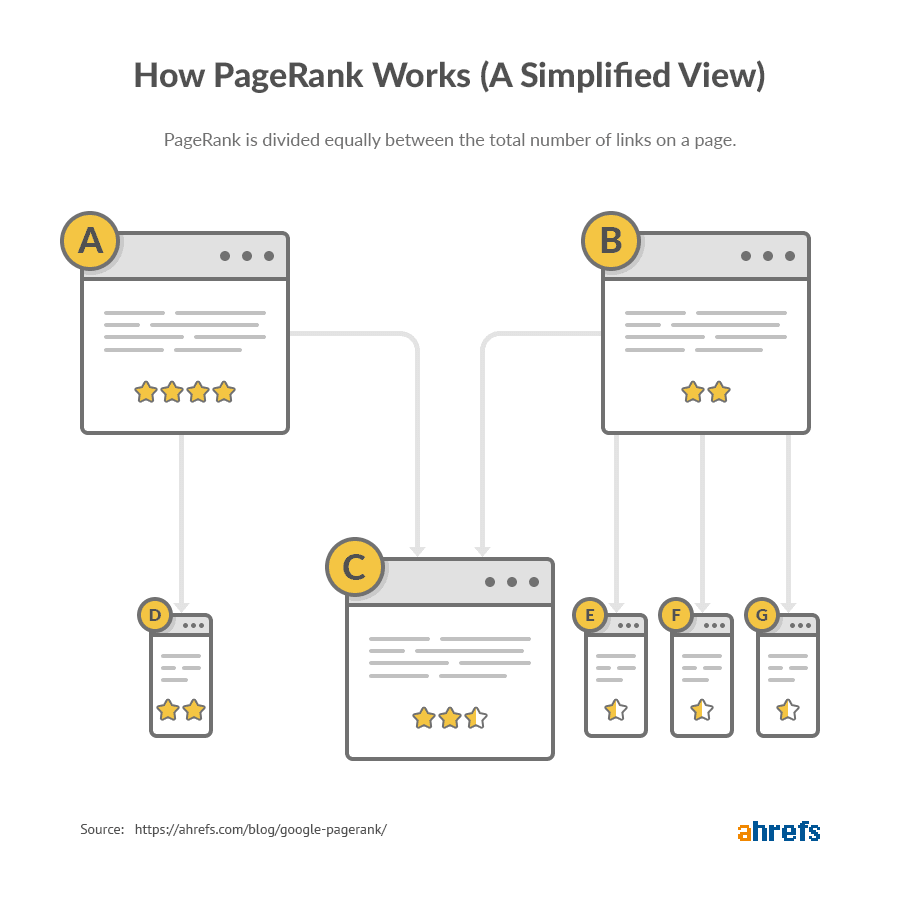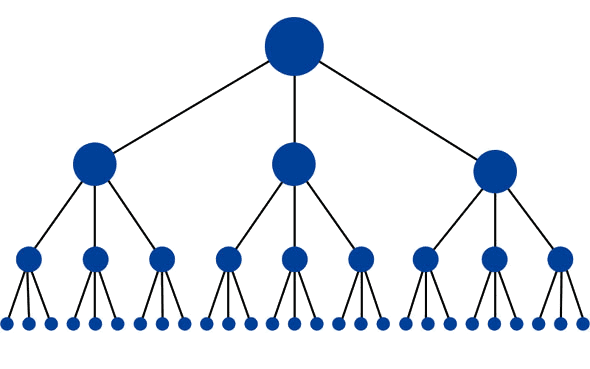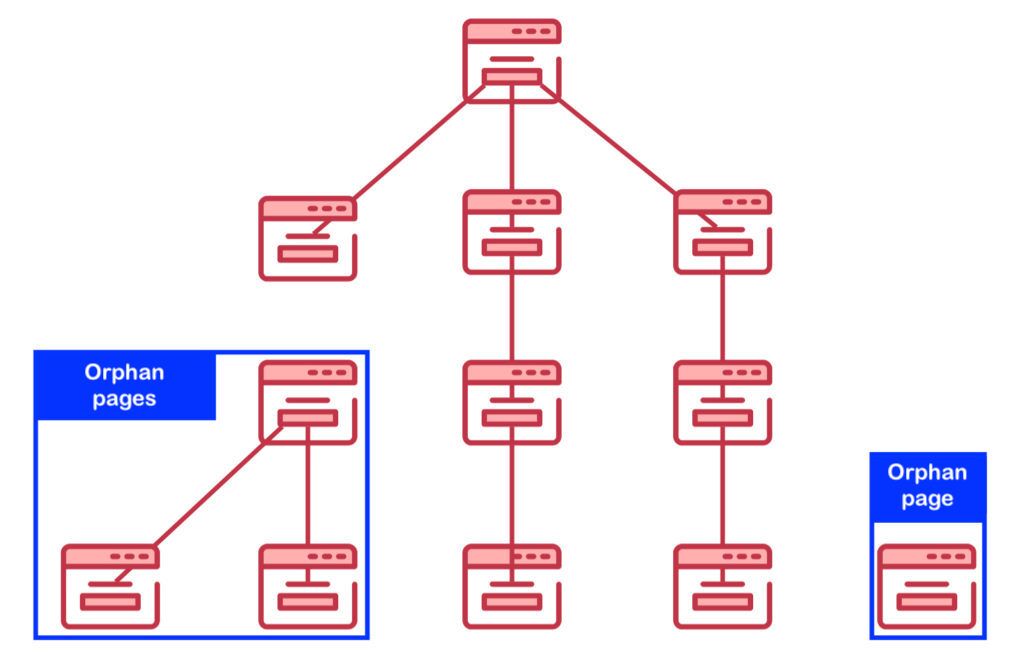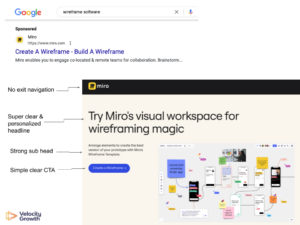What are Backlinks and Why do They Matter for SEO?
Backlinks are a foundational part of search engine optimization (SEO). They are links that point from other websites to your website, and they play a crucial role in determining your website’s authority and credibility in the eyes of search engines.
Understanding the Basics of Backlinks
Before we dive into the details of backlinks in SEO, let’s first define what a backlink is.
A backlink is simply a link from one website to another. It can be in the form of an image, text, or any other type of content. When a website links to another website, it sends a signal to search engines that the linked website is valuable and authoritative. This is why backlinks are such an important part of SEO – they help search engines determine which websites are worth ranking highly in search results.
Backlinks are not just important for SEO, but also for building relationships with other websites. When you link to another website, you are essentially endorsing their content and showing that you value their work. This can lead to opportunities for collaboration and networking within your industry.
Importance of Backlinks in SEO
Link Equity / PageRank
According to Google’s own documentation on How Search Works:
We look for sites that many users seem to value for similar queries. For example, if other prominent websites link to the page (what is known as PageRank), that has proven to be a good sign that the information is well trusted.
So backlinks are one of the most important ranking factors in SEO. Search engines use backlinks to determine the authority and credibility of a website. The more high-quality backlinks a website has, the more likely it is to rank highly in search results. In other words, backlinks are like votes of confidence for your website.
However, as indicated by this quote, not all links are created equal – there are many different factors which contribute to the level of PageRank / equity that is passed on to your site from a link including:
- The linking site’s popularity
- How related the linking site’s topic is to the site being linked to
- The “freshness” of the link
- The anchor text used on the linking site
- The trustworthiness of the linking site
- The number of other links on the linking page
- Authority of the linking domain and page
- Whether the link is “Followed” or “No Followed”
Types of Backlinks
There are two main types of backlinks: dofollow and nofollow. Dofollow backlinks are the type of backlinks that pass on link juice to the linked website. Link juice refers to the value and authority that is passed from one website to another through backlinks. Nofollow backlinks, on the other hand, do not pass on link juice.
What are No Followed Links?
It is possible to add a“nofollow” attribute to a link that tells Google not to pass any PageRank / equity to the target URL e.g:
<a href=”http://www.SiteABC.com” rel=”nofollow”>Site ABC</a>
“nofollow” attributes are added to links automatically or manually quite commonly for in a variety of contexts including :
- Blog comments (to deter link spammers from trying to take advantage of the host site’s link profile)
- Forum posts (to deter link spammers from trying to take advantage of the host site’s link profile)
- Editable Wiki pages (e.g. Wikipedia)
- Guest post signatures
- Advertising banners and sponsored posts (The idea here is that you shouldn’t benefit in the organic results by buying advertisements that include links on other websites)
While both types of backlinks are important, dofollow backlinks are typically more valuable from an SEO perspective. However, it’s important to have a mix of both types of backlinks to make your backlink profile look natural and diverse.
So No Followed Links are Pointless?
Not necessarily. No Followed links from the right website can still be incredibly valuable for SEO indirectly. As an SEO when it comes to link building, it can be really easy to get caught up in the metrics like number of followed links. But remember, the purpose of links is not only to drive PageRank / equity… in fact realistically that’s not the main purpose at all. Other key benefits of links, even if they are no-followed are:
- They can drive traffic. That traffic can result in sales / conversions. This seems blindingly obvious – but, as I said, it can be easy to get caught up in link metrics and ignore the fact that actually your objective is to drive relevant traffic that converts – no follow links can often do this in a far more straightforward manner than followed links.
- They can build brand awareness. Would you rather 20 followed links from obscure blogs with an average readership of 100 per month, or 1 no followed link from the top article on the Irish Times? (Hint: The Irish Times gets approx 20 million visits per month according to SEMrush Traffic Analytics)
- The domino effect. In the preferred option from the choice above (which is the Irish Times link, obviously), we can assume that if the Irish Times are linking to a page on your site, that the content on that page is of value to quite a large audience. So by appearing in the Irish Times you may open open the floodgates to a whole host of new links from other sites to the same piece of content – and many of thesea re likely to be followed instead of no-followed.
It’s also worth noting that backlinks can come from a variety of sources, including guest blog posts, social media profiles, and online directories. The key is to focus on building high-quality backlinks from authoritative sources that are relevant to your industry.
How Backlinks Impact Search Engine Rankings
Now that we know what backlinks are and why they are important, let’s take a closer look at how they impact search engine rankings.
Google’s Perspective on Backlinks
Google considers backlinks to be one of the most important ranking factors in its search algorithm. In fact, it has stated that backlinks are one of the top three ranking signals. This is because backlinks are seen as an indicator of a website’s authority and credibility. The more high-quality backlinks a website has, the more likely it is to rank highly in search results.
The Impact of Quality vs. Quantity
While it’s important to have a large number of backlinks, quality is just as important. A backlink from a high-quality website is worth more than dozens of backlinks from low-quality websites. This is because search engines value backlinks from authoritative websites more highly.
Making the Most of Backlinks Through Internal Linking
When a page (single URL) receives a lot of followed links from trusted, highly authoritative websites, this in turn boosts that pages own link equity, i.e. it’s trustworthiness and authority in the eyes of search engines.
If you’re site is logically structured and you’ve got a comprehensive internal linking strategy, the benefits are far greater than simply a boost for that one page. PageRank / equity is shared throughout your site with other pages through internal links. Here is a very simplified view of how PageRank works, courtesy of aHrefs:

The main implications of how PageRank works in relation to internal links are:
- You should ensure that your site is logically structured with clusters of related content all linked together through a well thought out internal linking strategy

- You should ensure that you avoid “orphan pages” I.e. pages with no internal links from anywhere else on the site

Strategies for Building High-Quality Backlinks
Building high-quality backlinks is essential for improving your website’s authority and ranking in search results. Here are some strategies you can use to build high-quality backlinks:
Natural Link Building
Natural links are links that your site attracts organically – i.e. an external sites links to your content of their own accord without explicitly being asked by you. For example, if you run a small café and a blogger links to your site from a blog post. Generally speaking, the more high quality content you have on your site in relation to your product / service offering, the more likely you are to attract links naturally.
Blogging and Social
A high quality blogging strategy can also attract links from other websites if your content is unique, high quality and novel. Combined with social sharing to a relevant audience, this can be a cost effective way of turbo-boosting your link profile. Make sure you do some research into the kind of content that works for other established sites in your niche and keep on top of the latest hot topics in your niche to ensure that your not wasting time writing about topics that have little to no chance of attracting links. This method is still pretty imprecise, but it’s a little more focused than just waiting for links to naturally happen.
Manual Link Building
There are ways to be more pro-active about improving your link profile without breaking the bank. For example adding links to online directories, setting up a Google My Business page, contributing to online communities and taking advantage of your existing network (e.g. links from partner sites to relevant content or links from testimonials or case studies on other relevant sites).
Digital PR
Depending on your market and/or niche, waiting for links to build naturally can be a slow process, even with really good content and a great product or services. Manual link building like the ways I’ve mentioned above can help but opportunities for inbound links through your network can be inherently limited by your niche and the size of your network. It can be tempting to turn to “black-hat” link building methods.
Black Hat link building methods are risky and not something I would recommend because sooner or later, even if you see a short term gain, Google’s algorithm will outsmart you and your site may be banned or penalized.
A far better option, when done properly, is Digital PR. There are countless definitions of Digital PR to be found out there on Google – but from my perspective what I’m talking about is essentially very similar to traditional PR but with the added objective of attracting links to your website. An effective digital PR strategy should serve the dual purposes of:
- Building brand awareness for your company
- Building your websites link profile through inbound links from high quality websites
Identifying and Analyzing Your Backlink Profile
In order to improve your backlink profile and boost your SEO, it’s important to regularly analyze your backlinks and identify areas for improvement. Here’s how:
Tools for Backlink Analysis
There are a number of tools available that can help you analyze your backlink profile, including Ahrefs, Moz, and SEMrush. These tools will provide you with detailed information about your backlinks, such as the number of backlinks you have, the quality of those backlinks, and any potential issues or penalties.
Assessing the Quality of Your Backlinks
When analyzing your backlink profile, it’s important to look at the quality of your backlinks. High-quality backlinks are those that come from authoritative websites that are relevant to your industry. Low-quality backlinks are those that come from spammy or low-quality websites. Removing low-quality backlinks and focusing on earning high-quality backlinks can help improve your SEO.
Final Thoughts on Backlinks
Backlinks are a critical part of SEO, and understanding how to build and analyze your backlink profile can be a powerful way to improve your website’s authority and ranking in search results. By focusing on high-quality backlinks and using the right tools and strategies, you can improve your SEO and drive more traffic to your website.

Darren McManus is an accomplished SEO Lead at Velocity Growth, a leading digital marketing agency. With over seven years of experience working agency-side, Darren has established himself as an expert in the field of SEO. Based in Galway, Ireland, he has developed bespoke SEO roadmaps and implemented long-term, award-winning SEO strategies for clients spanning various industries.
Darren possesses in-depth knowledge and experience across all areas of SEO, including technical optimization, on-site optimization, and off-site optimization. His comprehensive understanding of search engine optimization techniques enables him to craft effective strategies that significantly enhance organic visibility, drive website traffic, and generate conversions for his clients.
His expertise in SEO has been instrumental in helping his clients achieve their digital marketing goals and grow their businesses online. His track record of success demonstrates his ability to deliver tangible results in highly competitive markets.






